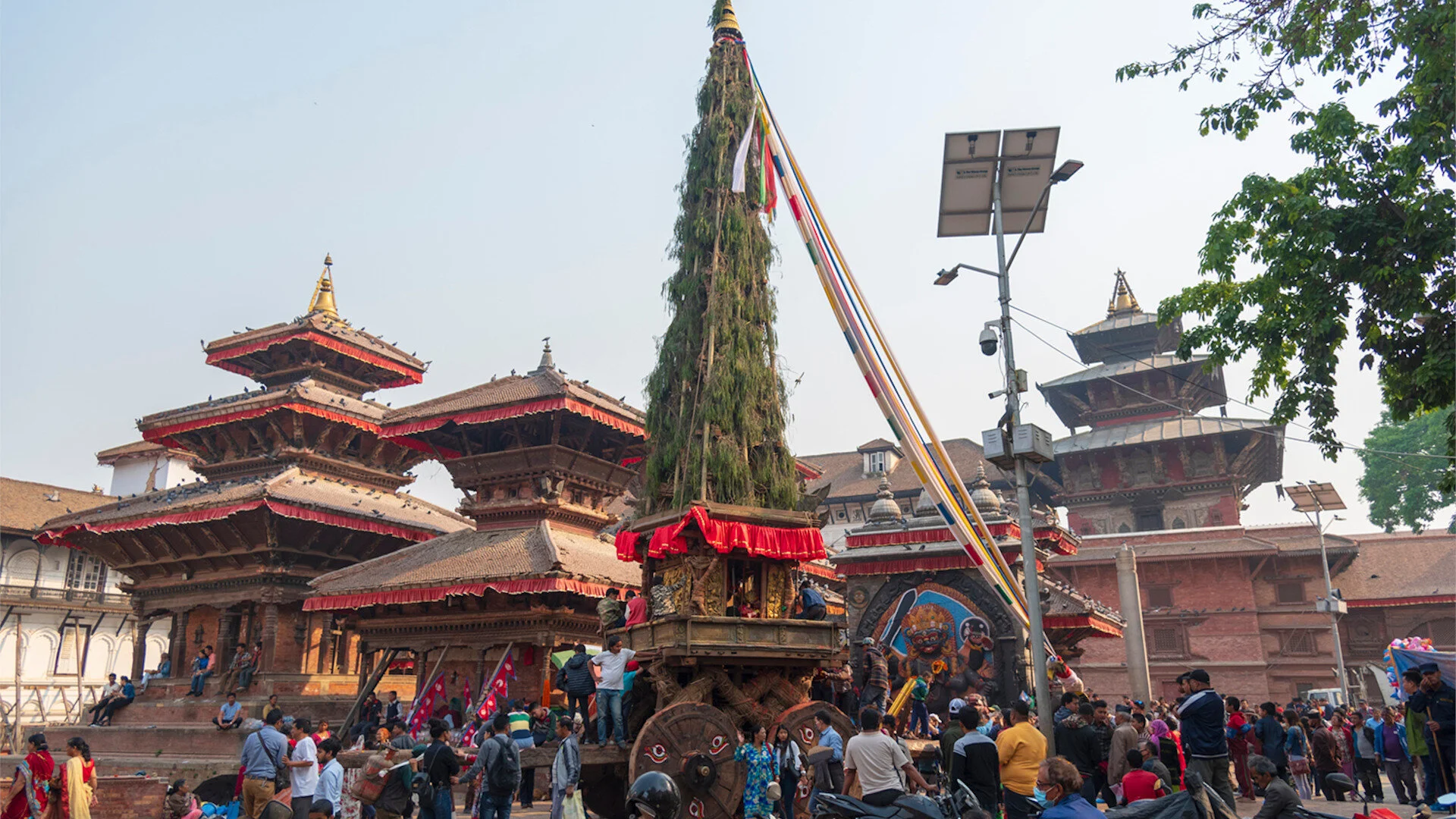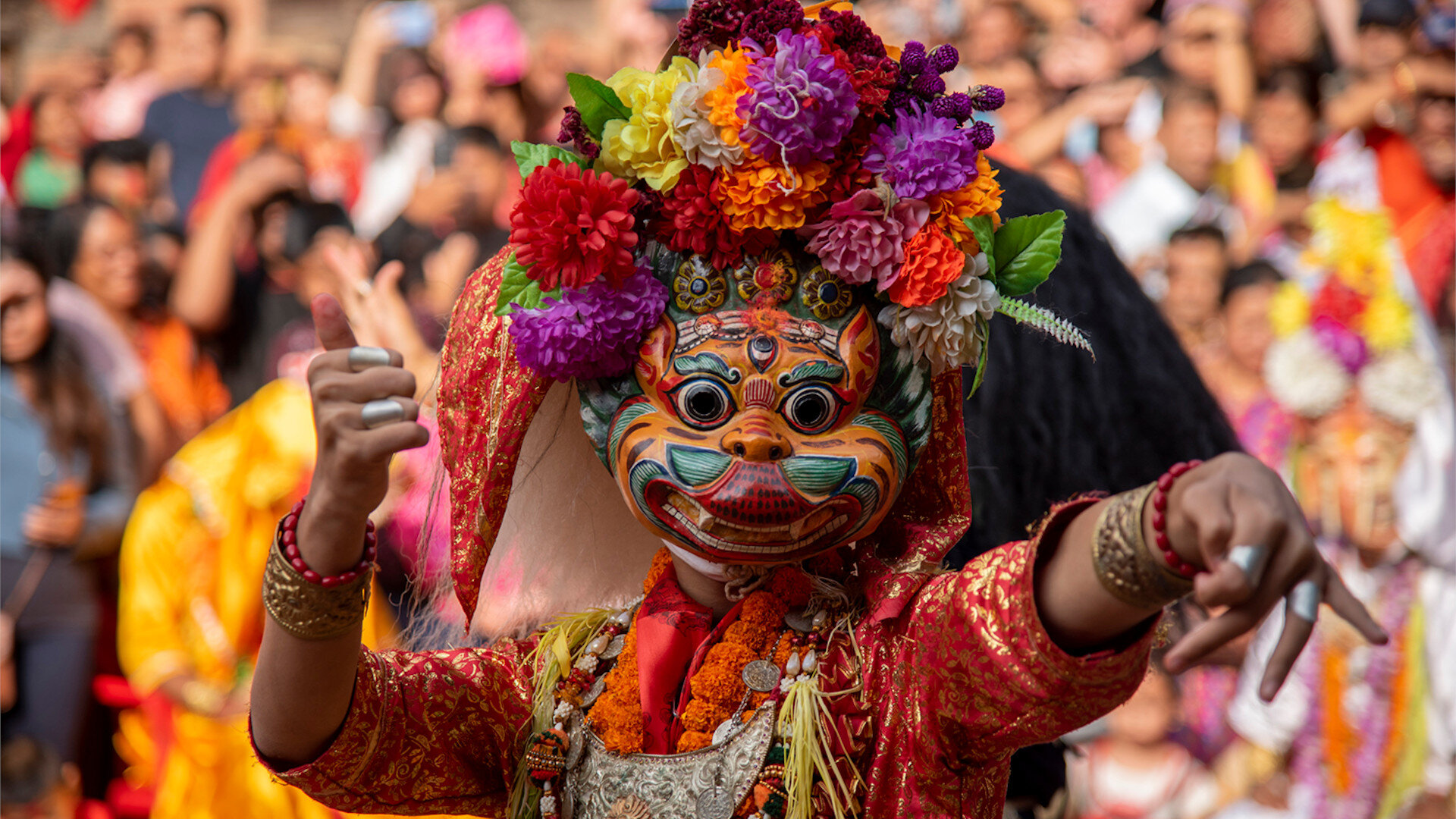Regarded as one of the biggest celebrations of the Newar community in Bhaktapur. Locally known as either ‘Biskah’ or ‘Bisket’ is derived from the ancient name of the festival ‘Bee Sikah’, which means ‘After the death of the serpents’. The origin of the celebration features great folklore most members of the Newar community grow up listening to from their elders.
The festival is celebrated in the communities of the old greater kingdom of Bhaktapur which was founded by the first Malla dynasty of the Valley Kingdom of Nepal. Whereas the city of Thimi celebrates it in a unique ‘Sindoor Jatra’ as the coming of the Nepali New Year according to the Vikram Era (BS).
“This younger brother (Ananda Malla, son of Abhaya Malla being very generous and wise gave up the sovereignty over the two cities (Kathmandu and Lalitpur) founded a city of 12,000 houses, which he named Bhaktapur (Bhatgaon) and included sixty small villages in his territory. After this, the Raja having obtained the favour and directions of Chandeswari founded seven towns; viz Banepur(Banepa) near Chandeswari Pithal; Panavati ( Panauti) near the Pragya Tirtha of Nepal. Celebrated in the Shastras, on the site of where Panchala-des formerly stood, Nala near Nala Bhagvati, Dhaukhel(Dhulikhel) near Narayana; Khadpu near Dhaneswar; Chaikot, near the residence of Chakora Rishi; and Sanga, near Nasika Pitha.” (Wright,1990)1
The name and purpose of the celebration date back to the medieval era, where it is believed there was once a beautiful princess who was very unfortunate with finding a husband. As she had a terrible curse be put on her which decreed that anybody who wedded her would die the very next day. Several men had already died due to the curse. The palace seemed to have lost all hope, but one young man came with a desire to end the ungodly curse. He with knowledge of his faith took upon himself to wed the forsaken princess but was forbidden by his elderly mother. But to the surprise of many an old lady (Goddess Bhadrakali in disguise) offered advice to the young man, which she asked him to follow in full and it would ensure his safety.
After the ritual ceremony ended, the two laid in bed and the princess feel right into sleep. ‘You are not to fall asleep with her, but await her to drift into sleep and be ready’, the young man remembered the advice of the old lady. As time passed on he was determined not to fall asleep and stared at the face of his wife. All seemed normal but out of a sudden two reptiles are said to have slithered out of the princesses nostrils!
In surprise and dismay, it was these two who had been the death of so many men and if not for the advice of the old lady, they would have already slain their next victim. He quickly picked up his razor-sharp knife and wasted no time in cutting the reptiles.
‘After the death of the serpents’, came the grand celebration of Bisyaku Jatra ( The original name of the festival). The then Malla King, began the festival as he wished all to remember the valour of the young man and offer worship to the principal deities Lord Bhairab and Goddess Bhandrakali.
A procession of two chariots, being pulled in a tug-of-war setting between Thane(Upper) and Kone(Lower) part of town which occurs begins the festivities of Biskah Jatra. Two lingo’s known as Yo Shi (55-feet-tall each) are erected in two different locations of the central city on New Year’s Eve and brought crashing down on New Year’s Day symbolizing the killing of the serpents. To symbolize the consummation of the marriage, the two raths (chariots) are made to crash against each other. This occurs during midnight when the Bhairab and Bhadrakali chariots are collided symbolizing copulation.
The festival lasts for a total of 9 days from the 27th of Chaitra to 5th of Baisakh. As the festival follows the solar Vikram Sambat (B.S) calendar the dates are exact every year.
This years edition of the Bisakh Jatra is to conducted within closed doors due to the SARS-CoV-2 Pandemic. As an alternate to the regular chariot festival the head priests are to perform special rites and rituals.
1: Wright, Daniel. (1990). History of Nepal (pp. 163). New Delhi, Madras: Asian Educational Services. (Original Work published in 1877)
POPULAR ITINERARIES

SIMILAR POSTS
0 Comments









































